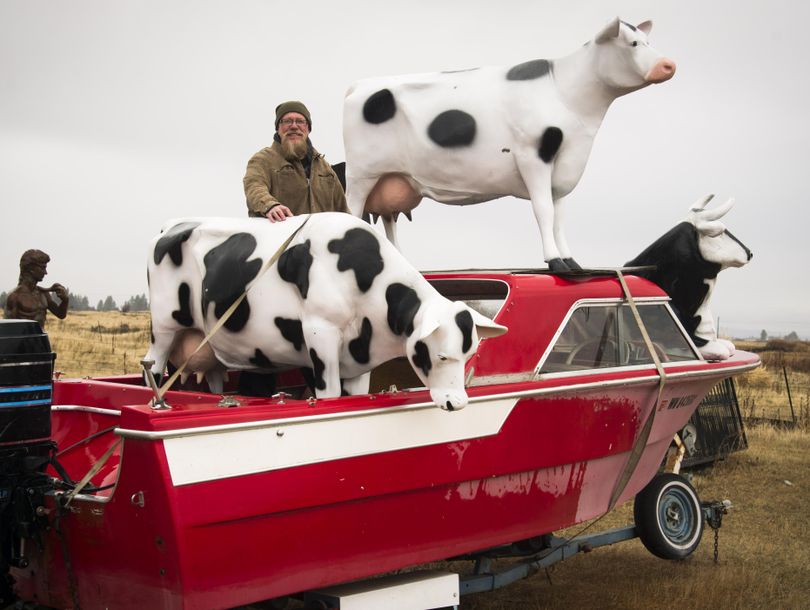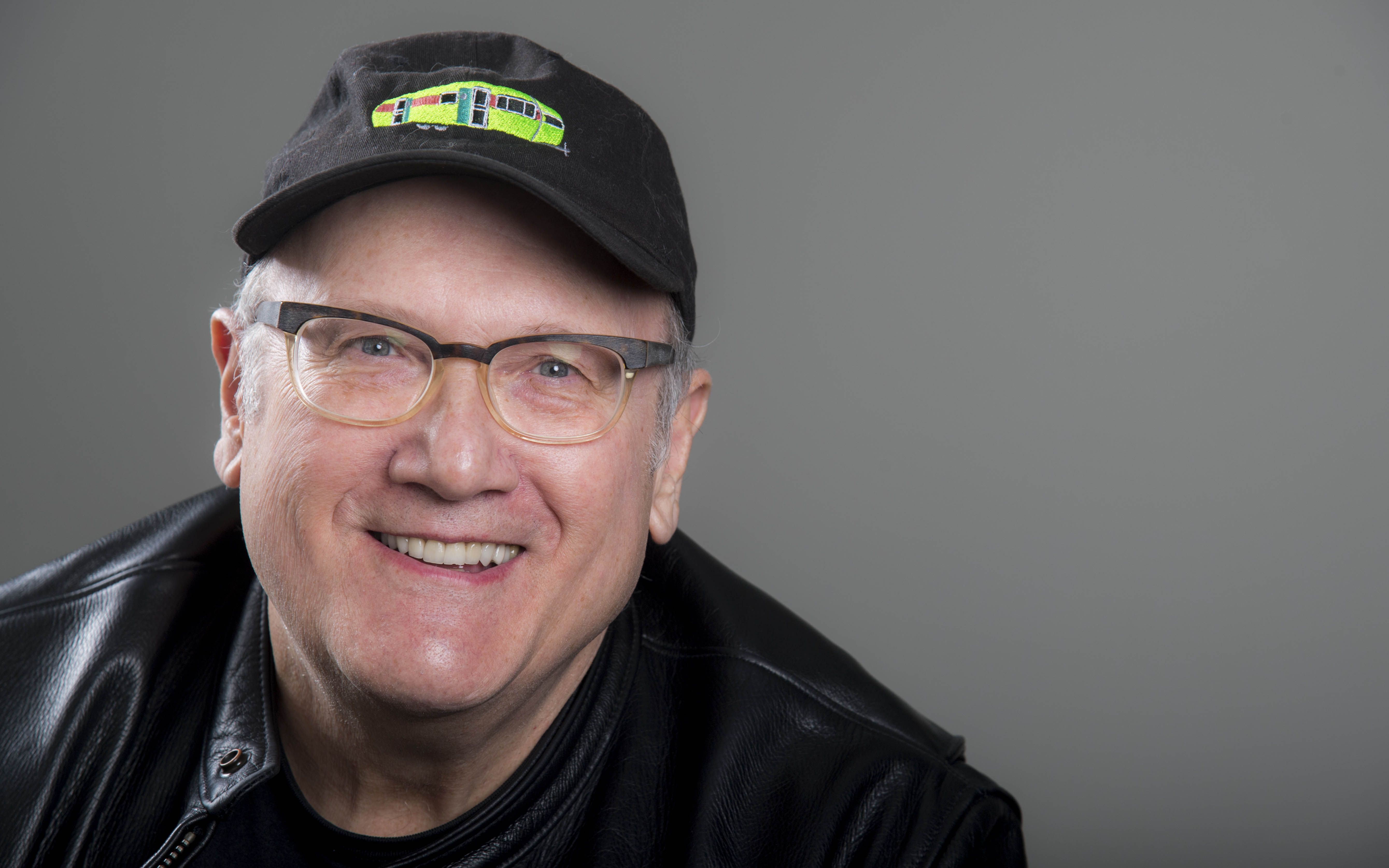Statuary farm is Way Out

Maybe it’s the motorboat full of life-sized metal cows that first grabs your attention.
Or it could be the 6-ton bronze Brahma bull that rears its head proudly from atop a small rise.
Then again, there’s the orange dragon, the cast iron bell from the 1880s, the roaming full-grown black buffalo, the ancient red fire truck and the Mother Mary garbed in a white shawl and blue and pink robes.
Everywhere you look there’s something to transfix you.
Grinning alligators. Flying saucers. Pigs and sheep. Wrought iron fencing. Dinosaurs. Elaborate metal conservatories …
The statuary farm at 11610 White Road is the best roadside attraction in Eastern Washington, if not the entire state.
The scores of items that face Interstate 90 near the Medical Lake exit are random and weird and strangely compelling. The whole oddball ranch looks like it was designed by Salvador Dali on acid, but that’s not the case.
This is the work and vision of a bearded and intense Spokane businessman:
Mike Ferguson.
“It’s all out of his brain,” said Ferguson’s brother, Mark, who owns 11 of the 21 acres here. “He knows how to barter. He knows how to make a deal.”
Mike named the place Way Out West, and I’ll second the “way out” part.
After years of passing it and marveling at the bizarre contents, I decided to finally stop and soak it all in, up close and personal.
Plus I already had an in with the owner.
I met Ferguson last summer. He was in a tiff with his thin-skinned landlord who didn’t like the “Dogtown” part of Ferguson’s Hillyard-based Dogtown Auction Company.
The issue was settled when Ferguson sold out to a couple of Coeur d’Alene businessmen who agreed to dump the Dogtown.
Now focused on Way Out West, Ferguson gets a kick from all the attention that it provokes.
Some kids drop by to have their senior photos taken amid the metallic curiosities. Couples, too, have used the site for their engagement photographs.
Snapshots don’t pay the bills, of course.
The point being that everything you see at Way Out West can be yours for a price that ranges from under $100 to 20 grand and more.
Speaking of high-priced items, my jaw dropped at the sight of the 40-foot steel palm trees. They weigh more than 5,000 pounds each and are so lifelike that many visitors ask if they’re real.
Sometimes Mark tells the truth. He’s also been known to, well, stretch things a little, telling the gullible about how the heat from an electric blanket helps the tiny palms grow into such giants.
So who buys this stuff?
You’d be surprised.
Some people drive by and get an itch. They see something they think would look great in their yard and – Wham! – suddenly they’ve gotta have it.
One guy was driving by from Southern Idaho. He stopped on a whim and bought two gigantic and expensive marble lions.
“Those are the sales that come out of the sky and bless you,” said Mark.
Another memorable sale involved a bronze bull about the size of a truck. Some guy just came by and bought for his kids.
And on and on …
“It was an evolution,” explained Mike. “It starts with an idea that grows into something that gets totally out of control.”
Ferguson, 56, is a registered nurse by profession. But he’s always been a picker, something he learned from his father while growing up in Los Angeles.
“Dad was an artist and a junker who bought and sold on the side,” he said.
Settling in Spokane, Ferguson at first went the conventional antique-selling route at a couple locations. Things changed when he began traveling and buying bigger and more eclectic items.
“The reason people fail in this business is that they stick to their niche,” he said, adding that he once bought a load of old coffins during a trip to the East Coast.
“They were fantastic,” he said of how they sold. “The regrets are never in what you bought, but about what you let go.”
Way Out West got its start as Ruby Street Antiques in Spokane. The place became wildly popular for its oversized statuary that Ferguson purchased by developing sources in China, Mexico and Indonesia.
After 10 years, the brothers Ferguson relocated to the Out West site when they lost their lease. Mike kept buying “bigger, crazier things.”
Over time he figured it out. He learned where to go to have the statues made and – more importantly – he learned the logistics on how to get them shipped all the way to Spokane and then set up.
“I always bought what I thought was cool,” he said. “But I never get attached to anything.”
The 2008 recession took a huge toll on this eclectic business.
“We went from $60,000 a month to nothing,” he said. “From 1997 to 2008 I was Goldfinger. I really couldn’t do anything wrong.”
From 2008-2012 it was just the opposite, he added.
Slowly, however, the economy has been inching back.
Things are looking up. Customers are once again starting to buy giant dragons and metal livestock.
Is it art? Is it kitsch?
“It’s P.T. Barnum,” said Mike. “It all about pulling them off the street.”
